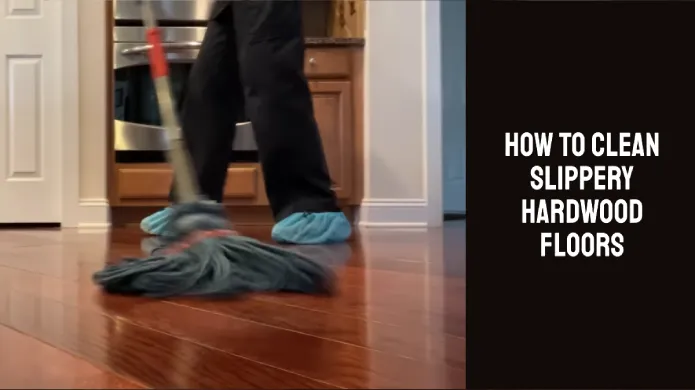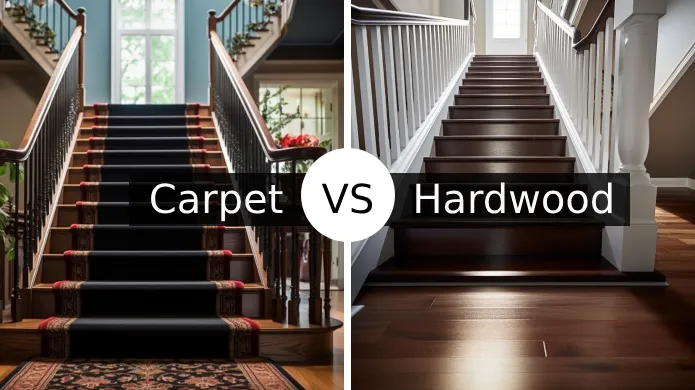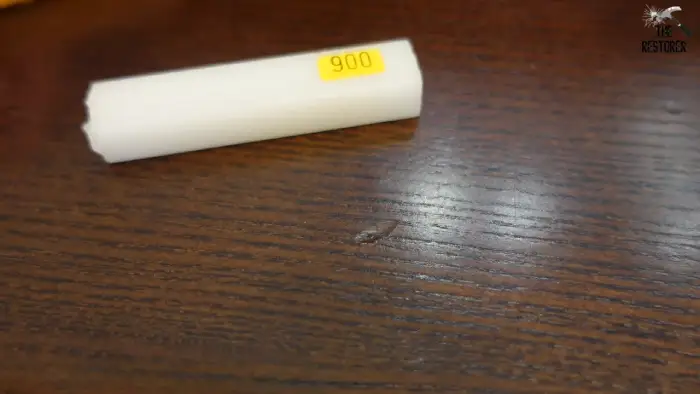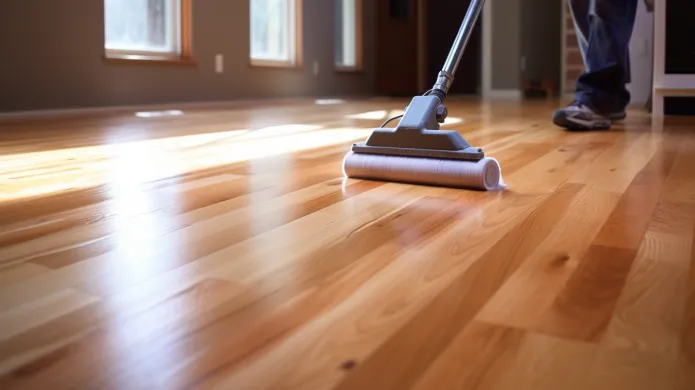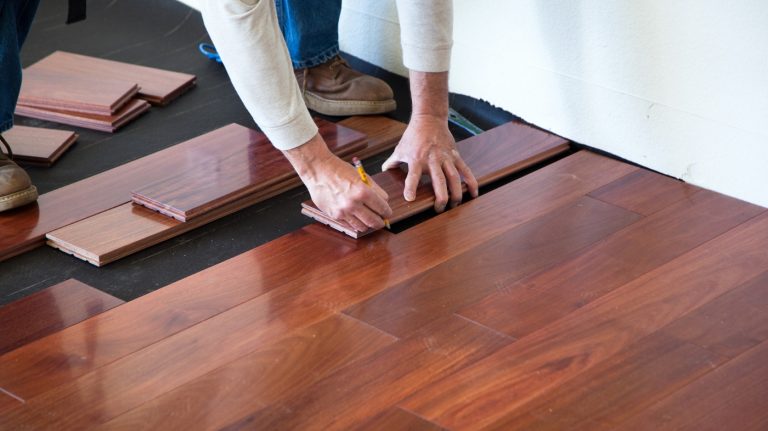How to Clean Slippery Hardwood Floors: 6 Steps [DIY]
Cleaning slippery hardwood floors properly is crucial to restoring their beauty and reducing the risk of accidents.
To clean slippery hardwood floors, you need to remove loose trash with a broom. Then prepare a cleaning solution. Then, dampen a soft mop or microfiber cloth with the cleaning solution, and mop the floor.
After mopping, dry the floor thoroughly with a clean microfiber cloth or towel to remove any residual moisture.
We’re going to break down all the steps of cleaning slippery hardwood floors and explain them in plain language. So, buckle up and get ready to explore.
How to Clean Slippery Hardwood Floors: Steps to Follow
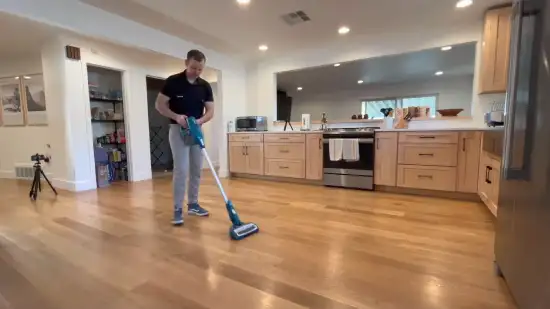
Here’s a quick step-by-step guide to help you clean slippery hardwood floors effectively:
Step #1: Gather the necessary supplies
Step #2: Remove loose dirt and debris
Step #3: Dust mop or dry mop the floor
Step #4: Prepare the cleaning solution
Step #5: Damp mop the floor
Step #6: Dry the floor
Let’s get into the details:
Step #1: Gather the Necessary Supplies
You have to gather the right supplies before you can start cleaning slippery hardwood floors. Start by locating a broom, which will be used to remove loose dirt and debris from the floor surface.
Next, acquire a dust mop or a microfiber mop, which will assist in removing finer particles and dust. You will also need a bucket to mix the cleaning solution and hold the water.
Choose a pH-neutral hardwood floor cleaner specifically formulated for wood surfaces to avoid any potential damage.
Also, have warm water ready for dilution. Find a soft mop or a microfiber cloth that is suitable for hardwood floors to use during the cleaning process.
Step #2: Remove Loose Dirt And Debris
To effectively prepare your flooring for a thorough sweep, use a broom to target corners, edges, and other nooks that may harbor loose dirt and debris.
Begin in the far corner of the room and sweep towards the door, sweeping in long, even strokes. Use a dustpan to collect gathered debris and dispose of it properly.
Remember to pay attention to hard-to-reach areas, such as under furniture and appliances. Use a smaller broom or brush to sweep these areas, and be sure to remove any larger particles that may cause slips or falls.
Step #3: Dust Mop or Dry Mop the Floor
Sweep away those pesky particles with a dust mop or microfiber mop, so your feet can dance across a smooth, sparkling sanctuary. A dry mop or dust mop is perfect for removing smaller particles and fine dust from your slippery hardwood floors.
These mops help prevent scratching the floor when you begin wet cleaning. Make sure to use a high-quality dust mop or microfiber mop and regularly replace the mop head to ensure efficient cleaning.
When using a dust mop or microfiber mop, start at the farthest corner of the room and work your way out toward the door. Move the mop in a figure-eight motion, covering every inch of the floor.
Pay extra attention to areas with high foot traffic and furniture legs where dust and debris can accumulate.
Step #4: Prepare the Cleaning Solution
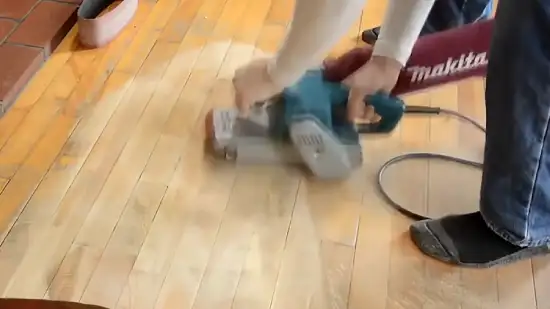
Get ready to experience the magic of a warm bucket of water mixed with a pH-neutral cleaner. It’s time to create a sanctuary for your beloved home.
Make sure to fill a bucket with warm water, being careful not to use water that’s too hot and could damage the hardwood. Then, add the manufacturer-recommended amount of a pH-neutral hardwood floor cleaner to the bucket. This will ensure that the cleaner is safe for your floors and won’t leave any residue or streaks behind.
When preparing the cleaning solution, be sure to follow the manufacturer’s instructions for the recommended amount of cleaner to use. Using too much cleaner can leave a film on your floors, making them even more slippery.
Once you have mixed the cleaner and warm water together, you’re ready to move on to the next step in cleaning your slippery hardwood floors.
Step #5: Damp Mop the Floor
As you gently glide the slightly damp mop or microfiber cloth over the surface of your beloved flooring, you’ll see how the grime and dirt disappear like magic.
The key is to ensure that the mop is only slightly damp and not dripping wet. Excessive moisture can damage the hardwood floor and make it more slippery. So make sure to wring out the mop well before you start mopping.
Here are some tips to get the best results while damp mopping your slippery hardwood floors:
- Divide the floor into small sections for effective cleaning.
- Pay extra attention to areas that are particularly slippery or dirty.
- For stubborn stains or grime, gently scrub those areas with a soft-bristled brush or cloth.
- Rinse the mop or microfiber cloth frequently to avoid spreading dirt or grime.
Step #6: Dry the Floor
You’re almost done with the mopping process, and now it’s time to make sure your beautiful flooring is completely dry.
After damp mopping, using a clean, dry microfiber cloth or towel to dry the floor is important. This step is crucial to prevent any moisture from seeping into the wood and causing damage.
Make sure to go over the entire floor surface, paying extra attention to any areas that may have more moisture. Also, avoid any unnecessary foot traffic on the wet floors until they’re completely dry.
Why Are My Hardwood Floors Suddenly Slippery?
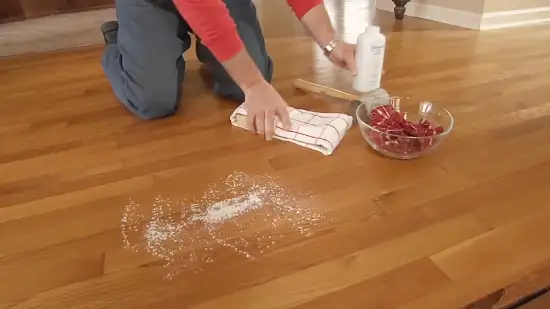
Have you noticed your hardwood floors suddenly becoming slippery? Several things could be causing this. Here’s why:
1. Residue Buildup
If you notice that your hardwood floors are suddenly slippery, it may be due to residue buildup. Cleaning products, furniture polish, and wax can accumulate on the surface of hardwood floors over time and make them slick.
The increased risk of slipping is not only frustrating but can also be dangerous, especially for children and older adults.
2. Wax or Polish Application
If you have recently applied wax or polish to your hardwood floors, an uneven application or excess product left behind can make the floor slippery.
This often happens when homeowners need to follow the instructions on the product label or apply more in one area.
3. Moisture or Spills
Moisture or spills on hardwood floors can cause them to become slippery. Even a small amount of liquid can make hardwood floors slick, increasing the risk of falls and injuries.
You need to clean up any spills promptly and thoroughly dry the area to prevent slipping.
4. High Humidity
Changes in humidity levels can affect the condition of hardwood floors, making them more prone to slipperiness.
When humidity is high, the wood can absorb moisture, causing it to swell and become slippery.
5. Worn Finish
Over time, the protective finish on hardwood floors can wear down, making them smoother and more prone to slipperiness. This is especially true in high-traffic areas, where the finish gets worn off faster.
6. Cleaning Products
The cleaning products you use on your hardwood floors can also affect their slipperiness. Some cleaners may leave behind a residue or film that makes the surface slick.
Use a hardwood floor cleaner specifically designed for hardwood floors to keep your hardwood floors safe.
How to Make Hardwood Floors Less Slippery?
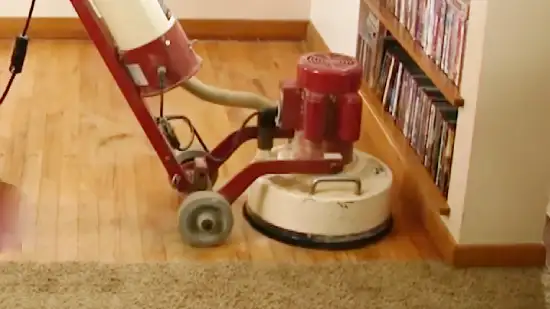
If you’re looking to make your hardwood floors less slippery, you can take a few key steps.
1. Clean the Floors Thoroughly
Keeping your hardwood floors clean is crucial in preventing slips and falls. Over time, floors can accumulate a layer of grime and residue, making the surface slippery.
To avoid banana peel moments, make sure your hardwood dance floor is spick and span with a gentle cleaning solution, then thoroughly dry it.
2. Use a Floor Cleaner Designed For Slip Resistance
For optimal safety and longevity of your hardwood dance floor, consider using a cleaner specifically formulated to enhance traction. These cleaners contain additives that create a slightly textured surface on the floor, making it less slippery and improving grip.
Be sure to read the label carefully and choose a safe product for hardwood floors.
3. Add Rugs Or Mats
You can enhance the safety of your dance space by placing rugs or mats with non-slip backs in areas prone to high traffic or slipping, such as near the sink or entryway.
These mats provide an additional layer of traction that can help prevent falls and injuries, especially on slippery hardwood floors. Not only that, but they also absorb any moisture that could make the floors even more slippery, making them an essential part of your floor safety strategy.
Select a rug or mat with a non-slip backing to ensure it stays in place. Consider the size and shape of the rug, as well as its material, to ensure it’s a good fit for your space.
You can also choose rugs or mats that complement your decor and add a touch of style to your dance space while enhancing its safety.
4. Apply Anti-slip Treatments
You can also apply anti-slip treatments to your hardwood floors. These treatments create a textured surface on the floor, improving traction and reducing slipperiness.
You need to follow the manufacturer’s instructions when applying these products to ensure they’re effective and safe for use.
When treating hardwood floors with anti-slip treatments, be sure to clean the surface first thoroughly. Any dirt or debris left on the floor can interfere with the effectiveness of the treatment.
After cleaning, apply the treatment evenly and allow it to dry completely before using the floor again. Remember to note that some treatments may need to be reapplied periodically to maintain their effectiveness.
5. Keep Floors Dry
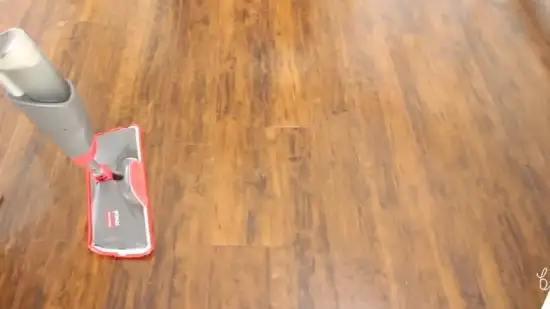
It is a good idea to quickly wipe up any spills or moisture in your dance space to prevent slips and falls, especially in areas like the kitchen or bathroom where water is more likely to be present.
Moisture can cause hardwood floors to become dangerously slippery, making them hazardous for dancing or any other activity that requires sure footing.
Even a small amount of water can put you at risk of injury, so keeping your floors as dry as possible is essential.
To prevent moisture from accumulating on your hardwood floors, carefully wipe up spills and dry the floors thoroughly after cleaning. Use a dry mop or towel to remove any excess water on the surface, and keep a fan or dehumidifier running to help dry out the air.
What are Some Natural Cleaners for Slippery Hardwood Floors?
Try some vinegar and water solution if you’re looking for natural cleaners to help with your slippery hardwood floors. This solution is a great option because it’s affordable and easy to make.
Another great option to try is a lemon juice and water solution, which not only helps with the slipperiness but also leaves a fresh scent in your home.
Black tea, baking soda, and water paste can also effectively clean and reduce the slippery texture of your hardwood floors.
What is the Best Vinegar to Use on Hardwood Floors?
White vinegar is the best vinegar for hardwood floors. You can clean wood surfaces with white vinegar because it’s versatile and effective.
Its mild acidity helps remove dirt, grime, and residues without damaging the finish or the wood itself. When cleaning hardwood floors, diluting white vinegar with water is recommended to create a gentle cleaning solution.
A common ratio is adding 1/2 cup of white vinegar to a gallon of lukewarm water. This mixture can be used to mop and clean the hardwood floors, leaving them fresh and shiny.
How Long does Anti-Slip Coating Take to Dry when You Apply it on the Hardwood Floor?
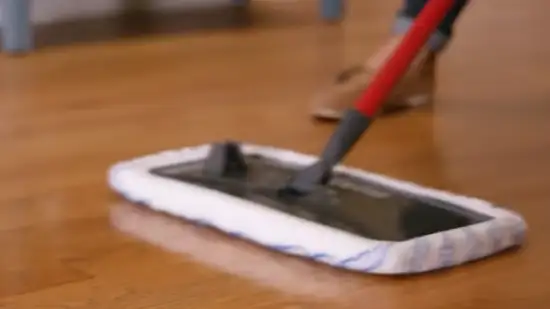
The drying time for anti-slip coating applied to a hardwood floor can vary depending on various factors. These include the specific product used, environmental conditions, and the thickness of the applied coating.
Typically, most anti-slip coatings require anywhere from 24 to 48 hours to fully dry and cure on a hardwood floor.
Remember to check the manufacturer’s directions for the specific anti-slip coating you’re using, as they may provide more accurate drying time guidelines based on their product formulation.
Factors like temperature, humidity levels, and air circulation in the room can also influence the drying process.
Ensuring proper ventilation and avoiding foot traffic during the drying period is essential to allow the coating to dry effectively and achieve its desired slip-resistant properties.
How Long does Anti-Slip Coating Last on Hardwood Floors?
The durability and lifespan of anti-slip coatings for hardwood floors can vary depending on several factors. This includes the coating type, application quality, and the level of foot traffic the floor experiences.
Generally, a well-applied anti-slip coating can last anywhere from six months to three years on hardwood floors.
You have to note that this estimate is approximate and can be influenced by factors such as the type of finish on the hardwood, maintenance practices, and environmental conditions.
Make Your Hardwood Floors Safe
Slippery hardwood floors can be dangerous for you and your family’s safety. It is essential to keep them clean to prevent slip fall accidents from occurring.
Following these six simple steps above, you can effectively clean your hardwood floors and make them considerably less slippery.
Clean your hardwood floors regularly, use slip-resistant floor cleaners, and keep them dry. Remember that maintaining consistency is crucial to making your hardwood floors less slippery.

